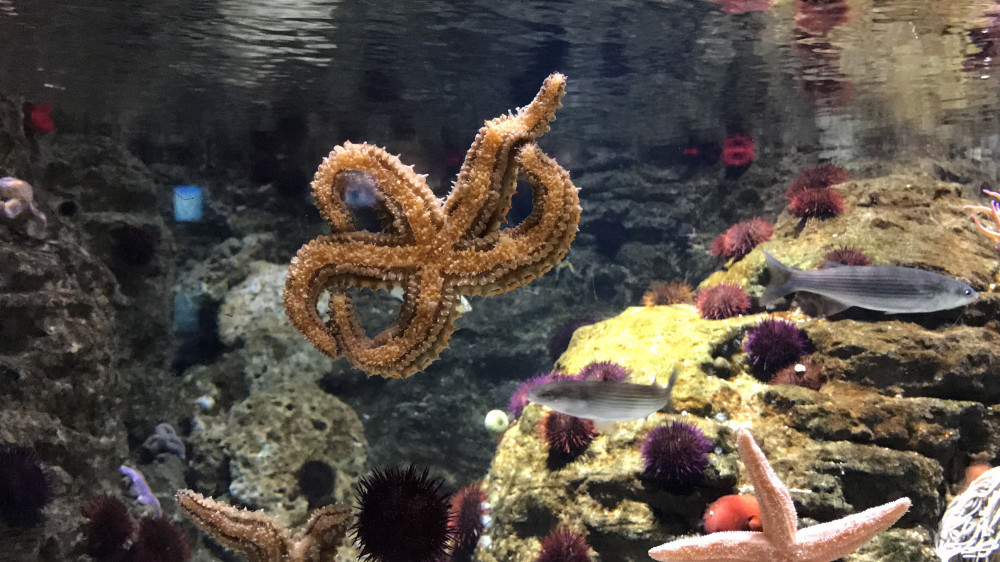“What Is a Sea Star? | What Really Happened to the Starfish?” We’ll learn about these amazing creatures, their survival skills, and existence in the ocean beds.
The name starfish was changed to sea star to make the distinction that they aren’t fish since they have no backbones. So, that’s what happened to the beautiful starfish we love. It’s only a name change.
Sea stars have many relatives from either the same or a different class under the Phylum Echinodermata. The brittle star and basket star are examples.
Now that you know this simple explanation, let’s get started.
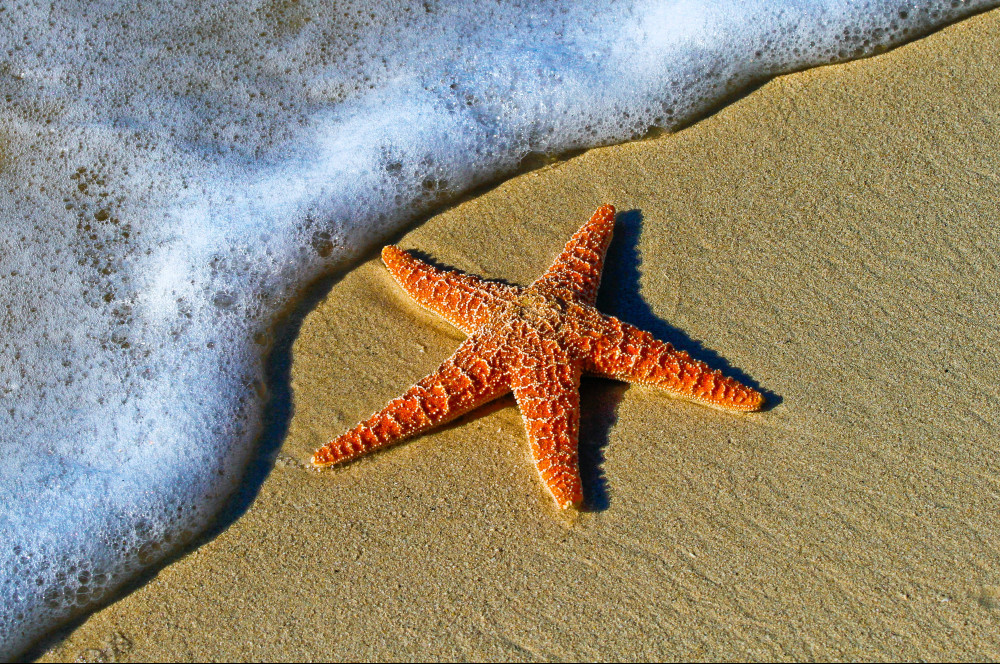
Sea Star, Starfish | It’s all the Same.
Despite the name change, many people are still sentimental about the word starfish. And, they already knew it wasn’t a fish. So, a starfish by any other name will always be a starfish.
What is a sea star? They are star-shaped or asteroidal marine invertebrates known as echinoderms. Anyway, for those who are interested in more complex classifications, here’s a breakdown:
- Class: Asteroidea
- Scientific Name: Asteroidea
- Phylum: Echinodermata
- Higher Classification: Asterozoa
- Kingdom: Animalia
Sea stars live in many areas of salt water. Or rarely in brackish water, including coral reefs in different climates. They even survive in sand over 20,000 feet deep!
They also come in a large array of colors–mainly shades of blue, brown, gray, orange, purple, and red.
The protective outer shell may be smooth, spiny, or granular. They are mainly predators but have predators who are bigger or just able to outsmart them.
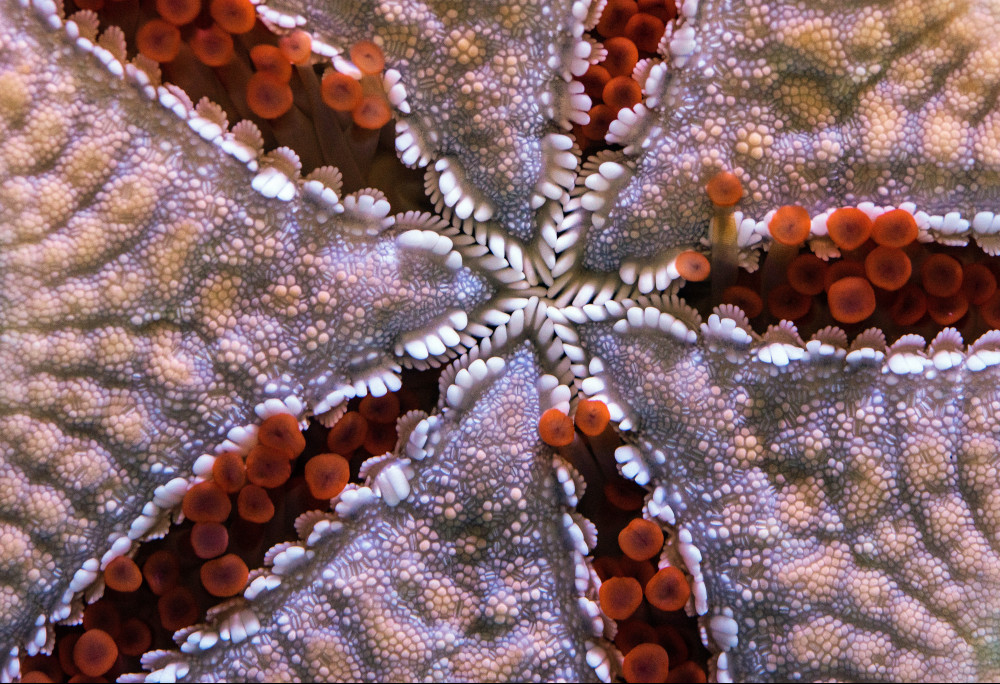 A central body disc and 5 arms are typical features with many having up to 20, 40 or more. The mouth is in the center of their underside while the anus is on the upper side.
A central body disc and 5 arms are typical features with many having up to 20, 40 or more. The mouth is in the center of their underside while the anus is on the upper side.
They have rows of small tubular feet on the underside of each arm, which operate by a water vascular or hydraulic system. These help them with movement and to capture prey.
Such sea creatures do not have blood. Interestingly, their complex vascular system uses sea water to carry nutrients through their bodies.
More Features | Feeding, Regeneration, Reproduction
Three interesting features about sea stars is their feeding habits, regenerative abilities, and methods of reproduction.
Feeding Habits: They feed in two different ways–eversion of their stomachs or suspension.
Regenerative Abilities: This is a rare feature. Some species of sea stars can regrow broken parts . As a result, will even shed a limb to escape from a predator.
Reproduction: Two ways in which they reproduce are asexually on their own or sexually with a mate.
Moreover, scientists have discovered more than 2,000 types of sea stars so far. They are also closely related to sand dollars, sea cucumbers, and sea urchins.
Brittle stars are also echinoderms similar to sea stars except that they have long thin arms. And, they belong to the class Ophiuroidea.
In addition, basket stars are the largest ophiuroids with many branched arms and live mainly in deep sea habitats.
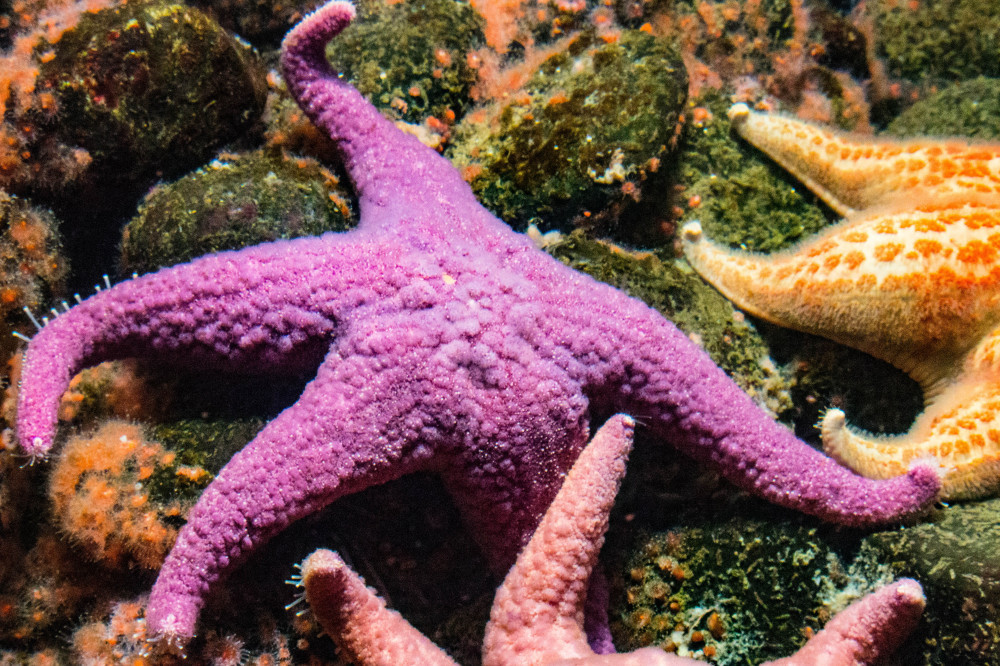
Starfish | The Predator.
The starfish has a rich menu of molluscs such as clams, oysters, and snails, also small fish. Their eversion technique is to extend the stomach through the mouth after attaching to their prey.
Subsequently, strong acids from the stomach dissolve the trapped creature for easy entry into the stomach. Smaller organisms are swallowed whole and inedible parts passed back through the mouth.
On the other hand, suspension feeding allows them to capture plankton and bacteria without much effort by the mucus coating on their arms. They then transfer them to their stomachs.
Plankton are microscopic and drift as the ocean’s motion carry them along. Phytoplankton refers to plants while zooplankton refers to animals.
Sea stars have eyes on the tip of each arm. Sensory nerves from their complex vascular system extend from the central disc to their arms. This makes capturing food and feeding more convenient.
They are versatile in their activities even without having a brain.
Although they also have predators, their hard shells usually serve as a deterrent. Their tactic of shedding limbs that have been caught sometimes helps them to escape.
Some predators to sea stars are fish, otters, seagulls, sharks, stingrays, and other sea stars.
Growth and Regeneration | The Sea Star Way.
The life of a sea star begins in numerous ways even with similar species. Some are hatched from eggs fertilized mainly externally but also internally.
Sexes are not identifiable and some have both male and female organs. In other cases females split in half producing male offspring. It is believed that they eventually become females.
Development into actual young sea stars is also done in diverse ways. After fertilization, some eggs become attached to plants and rocks. Others are brooded in pouches by adults.
Every aspect of regeneration does not apply to all species of sea stars. Some regrow arms or a whole sea star from a broken off arm even small fragments of it. In the meantime the missing arm regrows.
Brittle stars or serpent stars also have the capacity to regenerate broken arms. However, they do not regenerate whole brittle stars.
The whole reproduction and regeneration processes among species are much more complex. It’s not possible to explain it here. However, this area alone makes quite an interesting study.
Sea stars self populate in accordance with favorable or non favorable conditions. It’s as though they’re making sure they aren’t outnumbered.
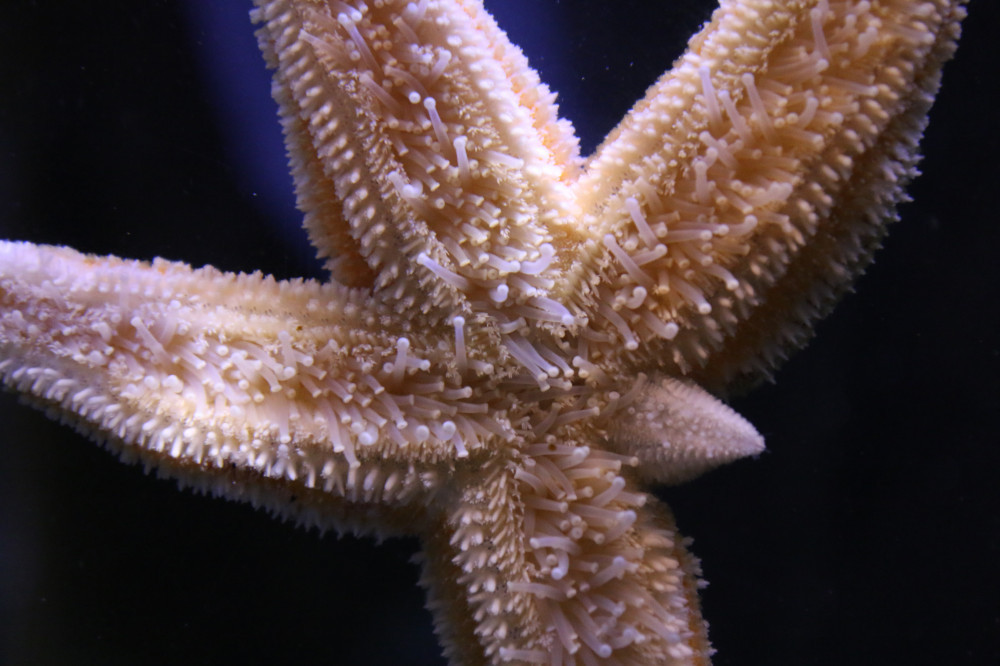
Habitat | Home of the Stars.
Habitat life includes coral reefs, deep sand, kelp beds, rocky shores, sea grass, and tidal pools in a wide range of climates. They can live up to 35 years.
Wherever they are found in the entire global ocean–Atlantic, Pacific, Indian, Arctic, and Southern or Antarctic–they prefer the ocean floor.
Sea stars are chiefly solitary creatures but are often found in clusters for feeding. Most of them move very slowly by way of their tubular feet. Others with a different mechanism can go faster.
Sea stars play an important role in coral reefs and the majority of species are considered beneficial in many ways. There are a few that are extremely dangerous to coral reefs and need to be controlled.
Two destructive kinds are crown-of-thorns sea stars found in the tropics and the northern Pacific sea star.
Starfish Wrap Up | Bullet Points.
Here’s a summary:
- The sea star is the commonly known starfish and are echinoderms related to sand dollars, sea cucumbers, and sea urchins. They lack backbones making them invertebrates unlike fish.
- They sport a wide array of colors; have between 5 and over 40 arms; and have smooth, spiny, or granular shells.
- These predators feed on molluscs as their primary source of food but also eat small fish.
- Different species reproduce in different ways. However, there are variances in same species.
- Regeneration of segments of their bodies or a whole sea star is a common way of life among many species.
- Their habitat include coral reefs, rocky shores, deep sea, warm or cold climates, but not freshwater.
- Some species are a real threat to the survival of coral reefs despite how beautiful and beneficial they can be.
- Marine authorities are using methods to control the crown-of-thorns sea star and other dangerous species.
This is a very short version of what could be said about these creatures. I hope you enjoyed this article, “What Are Sea Stars? | What Really Happened to the Starfish?”
If you have any questions or comments, please feel free to leave them below. I will be more than happy to address them.
Veron Lee Campbell | Entrepreneur | The Way 4WordEnterprises
